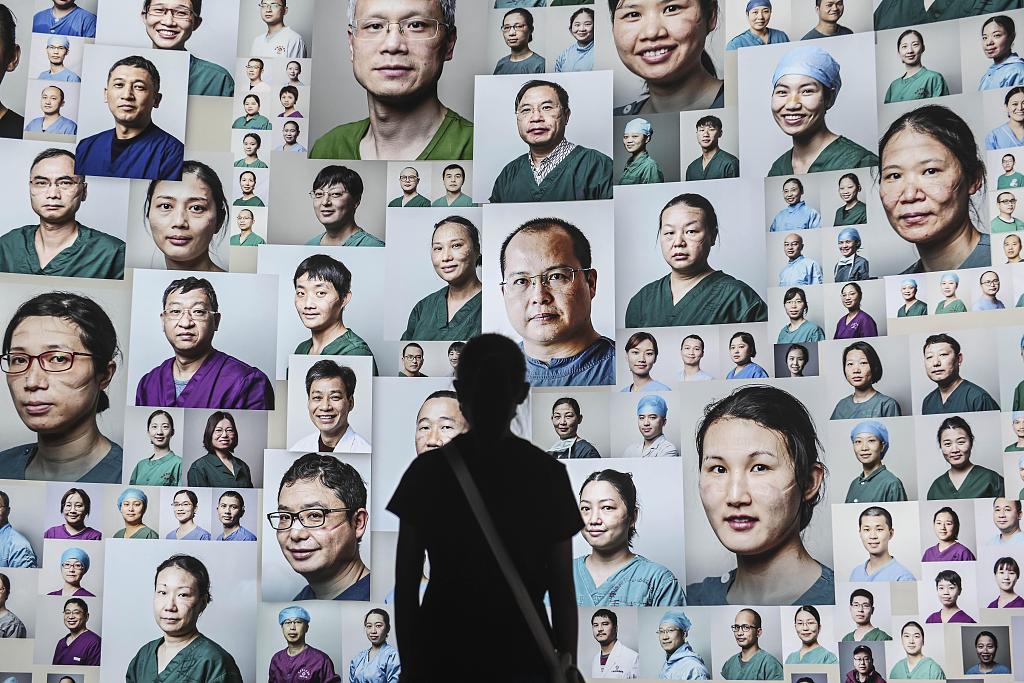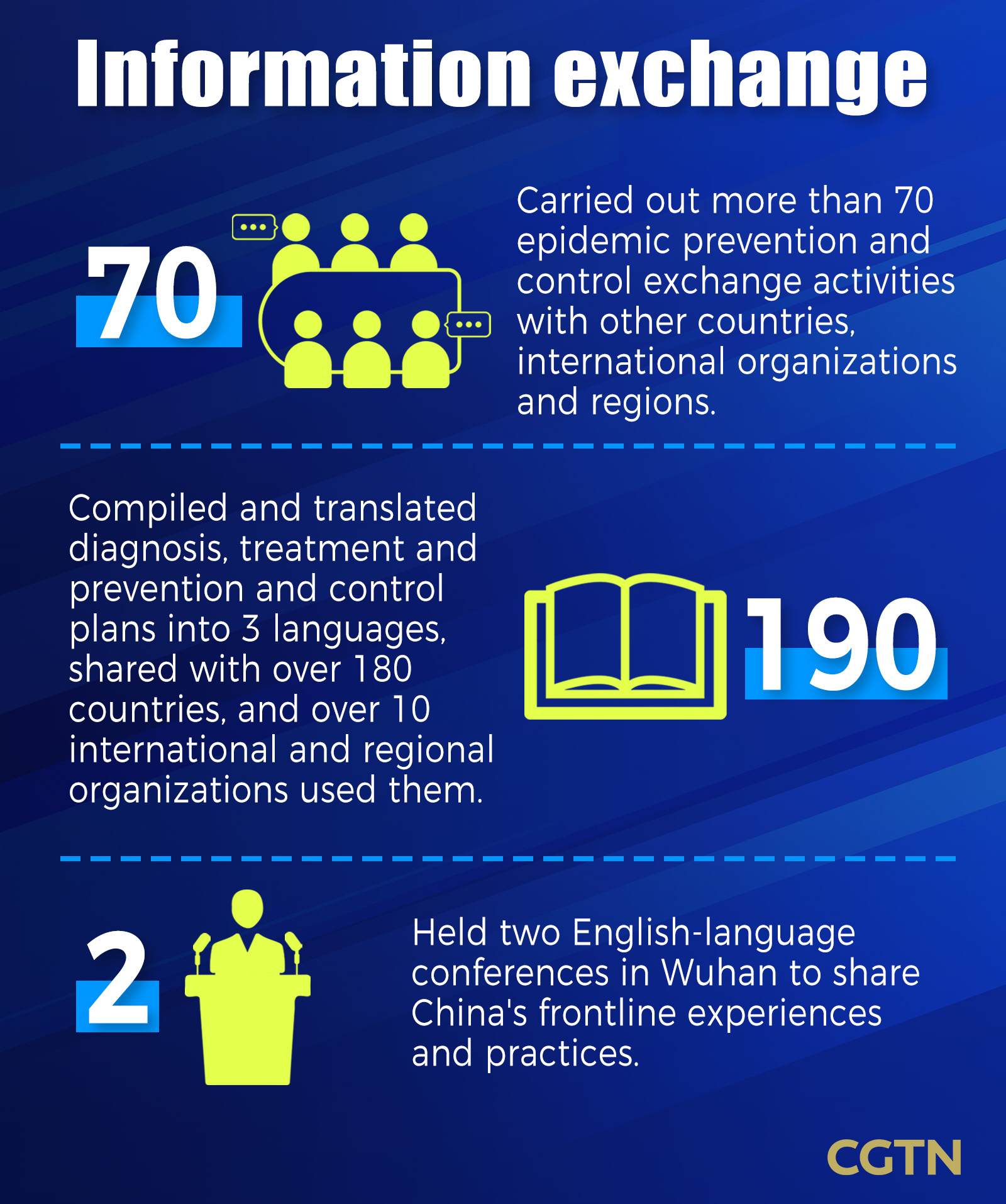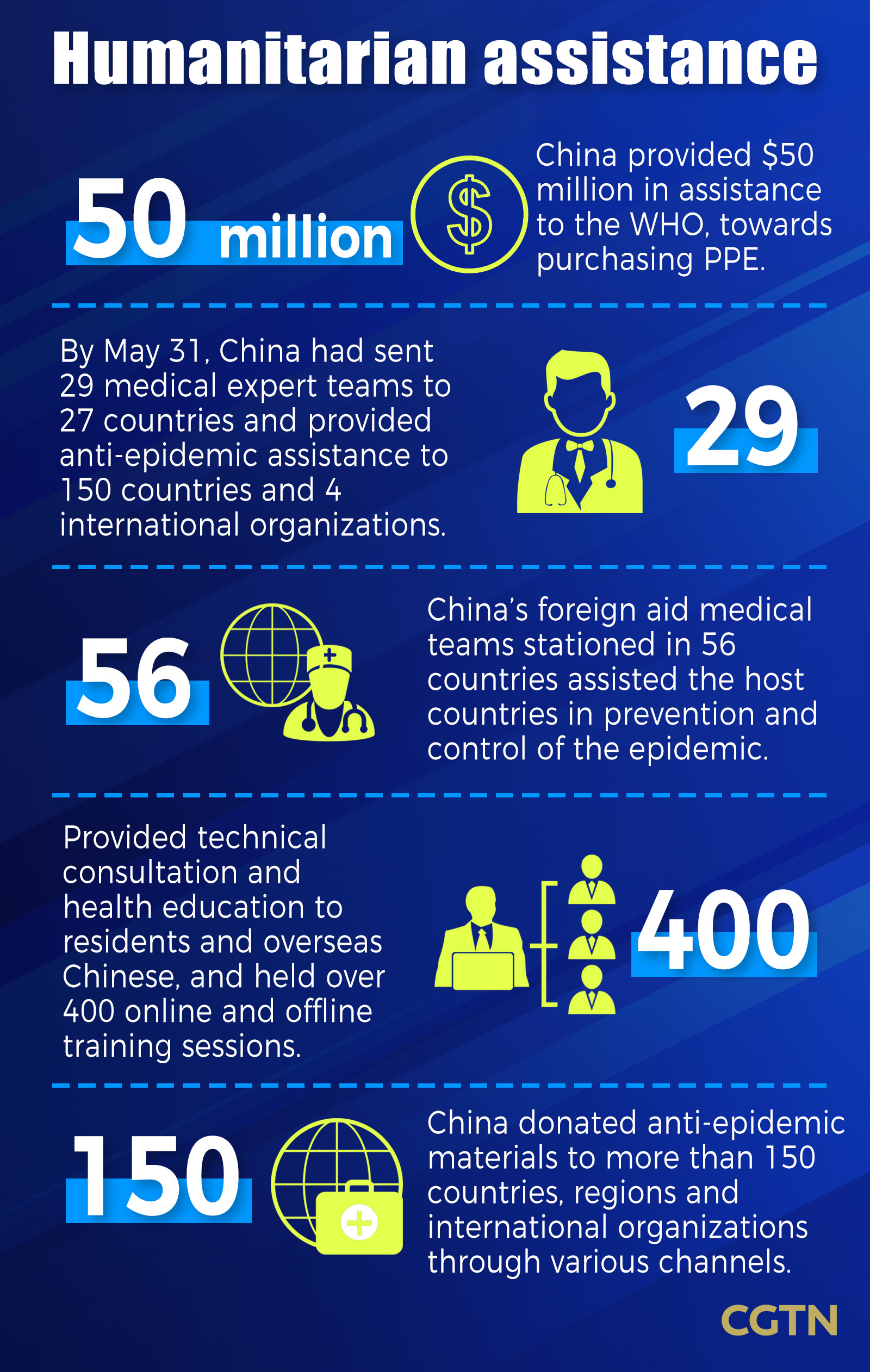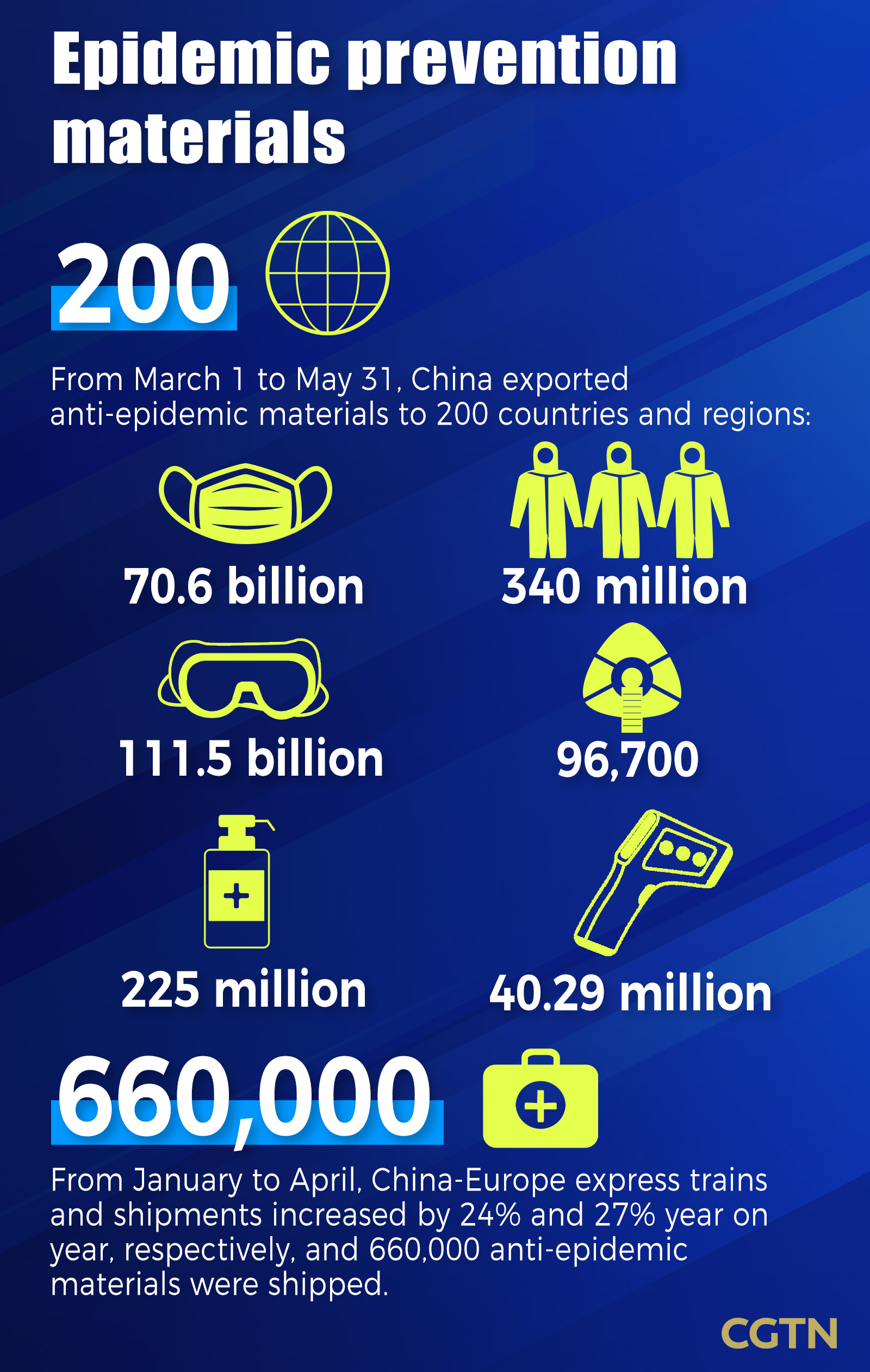
"Special Exhibition of Tribute to Anti-epidemic Workers" launches at Guangdong Museum. /VCG
"Special Exhibition of Tribute to Anti-epidemic Workers" launches at Guangdong Museum. /VCG
Since the outbreak of COVID-19, countries worldwide have suffered severe losses. At a special summit focused on COVID-19 among leaders of the G20 on March 26, all parties pledged to work together to meet the challenges.
But much remains to be done. From November 21 to 22, the G20 Leaders' Summit will be held by video to discuss how to promote global cooperation in response to the epidemic and stabilize world economic development.
As the first country to deal with the outbreak, China has both benefited from the support of the international community and contributed to it. When China was bearing the full brunt of COVID-19's wrath, leaders of over 170 countries and 50 international and regional organizations expressed their support. A total of 77 countries and 12 international organizations provided assistance.
China has also worked with the international community to communicate information, share best practices and provide assistance. Below is a summary of some of the the country's contributions.
Sharing anti-epidemic experience

China has carried out more than 70 epidemic prevention and control exchange activities with other countries and regions as well as international organizations. The country compiled and translated diagnosis and treatment measures along with prevention and control plans into three languages, which have been shared with more than 180 countries and used by more than 10 international and regional organizations. The Office of the State Council of China organized two English-language conferences in Wuhan, inviting relevant experts and frontline medical staff to share China's experience and practices.
Humanitarian assistance
China provided two batches of $50 million in cash assistance to the World Health Organization (WHO), and by the end of May, sent 29 medical expert teams to 27 countries and offered anti-epidemic assistance to 150 countries and four international organizations.

The country has actively guided long-term foreign aid medical teams stationed in 56 countries to assist host countries in prevention and control of the epidemic. It also provided technical consultation and health education to the residents and overseas Chinese, and held more than 400 online and offline training sessions.
China's local governments, enterprises, private organizations, and individuals have donated anti-epidemic materials to more than 150 countries, regions, and international organizations through various channels.
Exporting epidemic prevention equipment
From March 1 to May 31, China exported anti-epidemic materials to 200 countries and regions, including 70.6 billion masks, 340 million sets of protective clothing, 111.5 billion goggles, 96,700 ventilators and test kits, and 40.29 million infrared thermometers to 225 million people.

From January to April, the number of China-Europe express trains and shipments increased by 24 percent and 27 percent year on year, respectively, and a total of 660,000 anti-epidemic materials were shipped, which played an important role in maintaining the smooth flow of the international industrial chain and supply chain and ensuring anti-epidemic material transportation
Vaccine development
Focusing on "traceable, diagnosable, curable, preventable, and controllable," China organized national forces to carry out scientific research on epidemic prevention and control, accelerated scientific research and development and application, and deployed and launched 83 emergency research projects and has promoted the entry of 10 drugs or treatment methods.
Chinese President Xi Jinping promised at the 73rd World Health Assembly that after China's COVID-19 vaccine is completed and put into use, it will serve as a global public product and the country is committed to making it accessible and affordable to developing countries.

